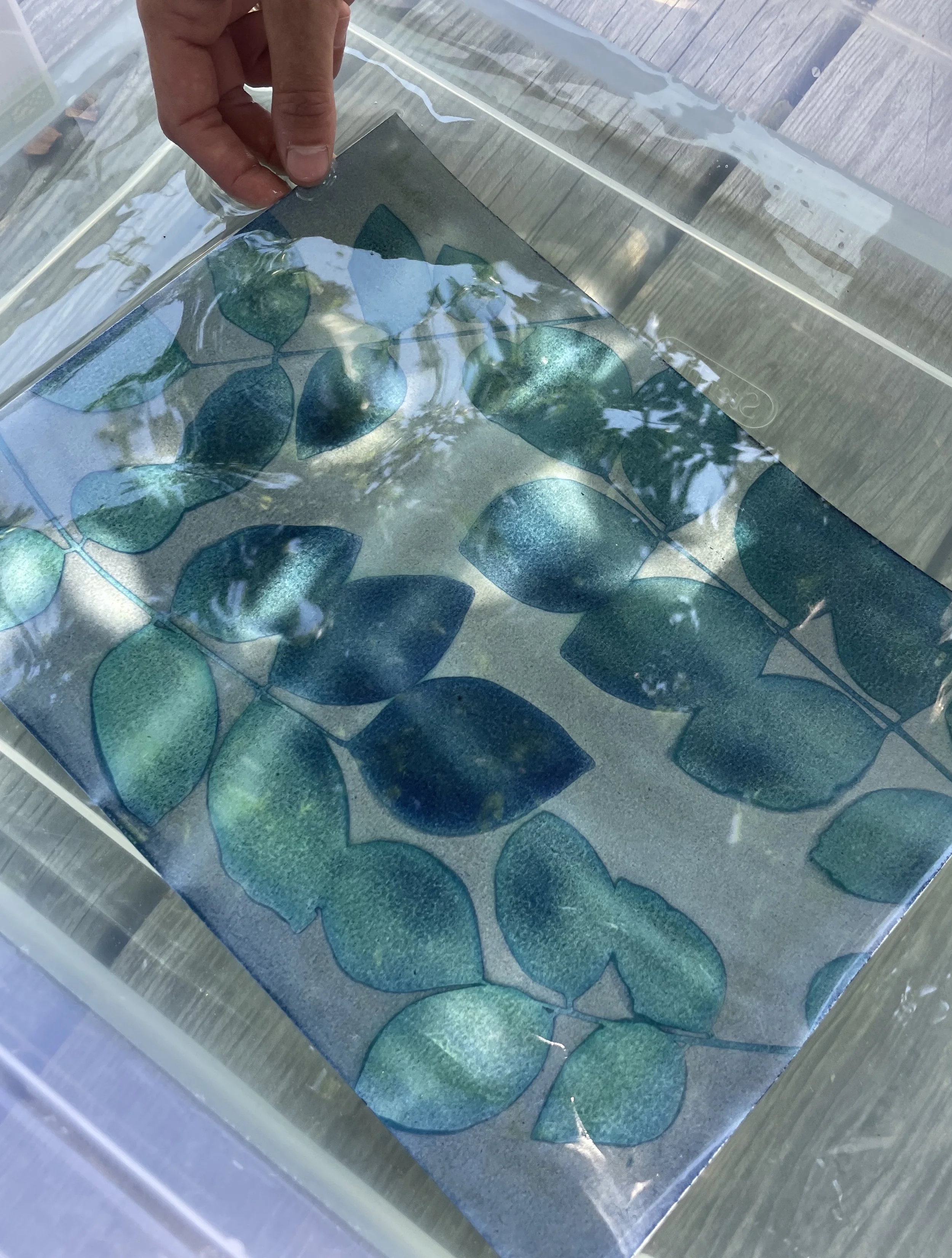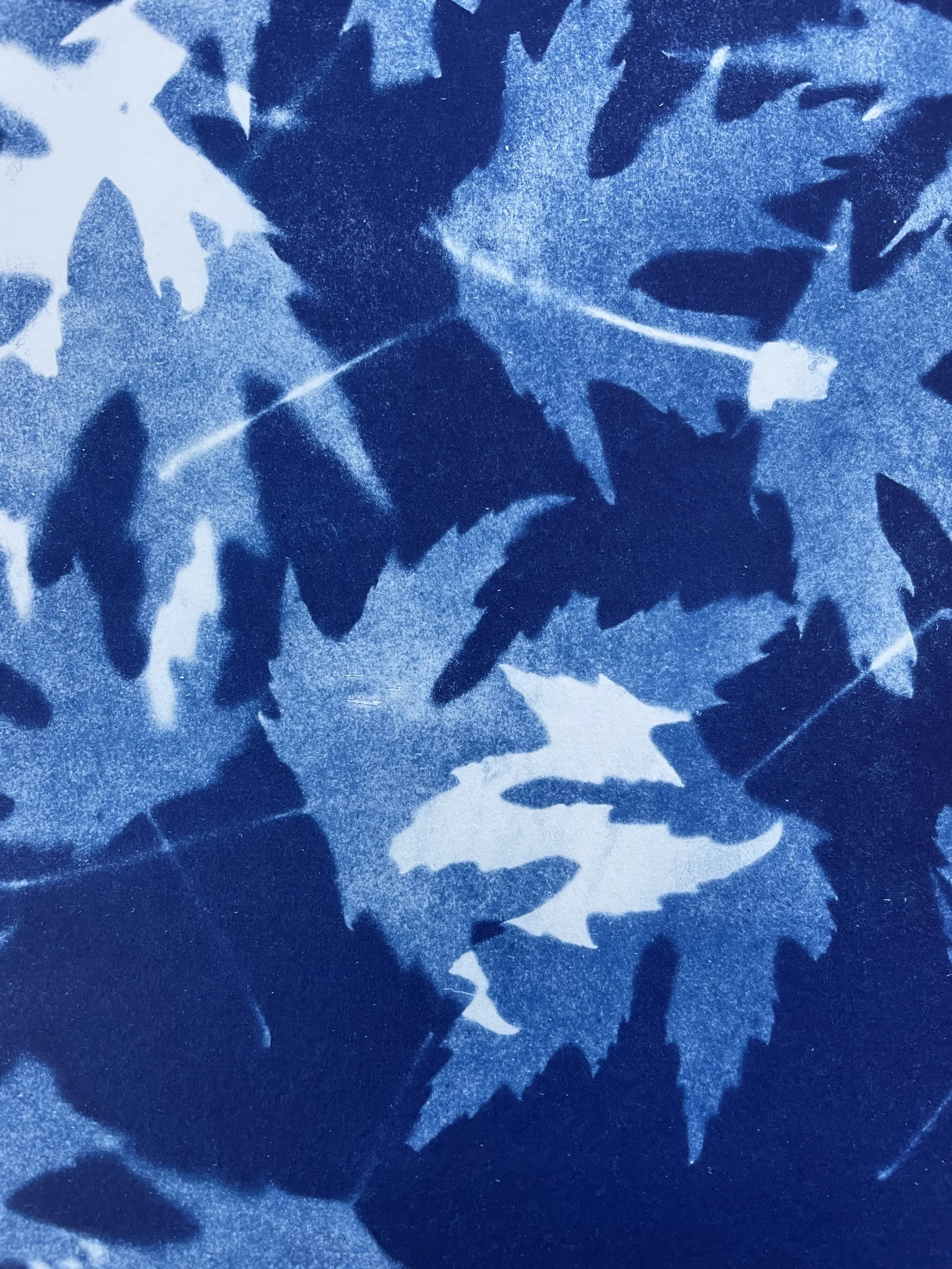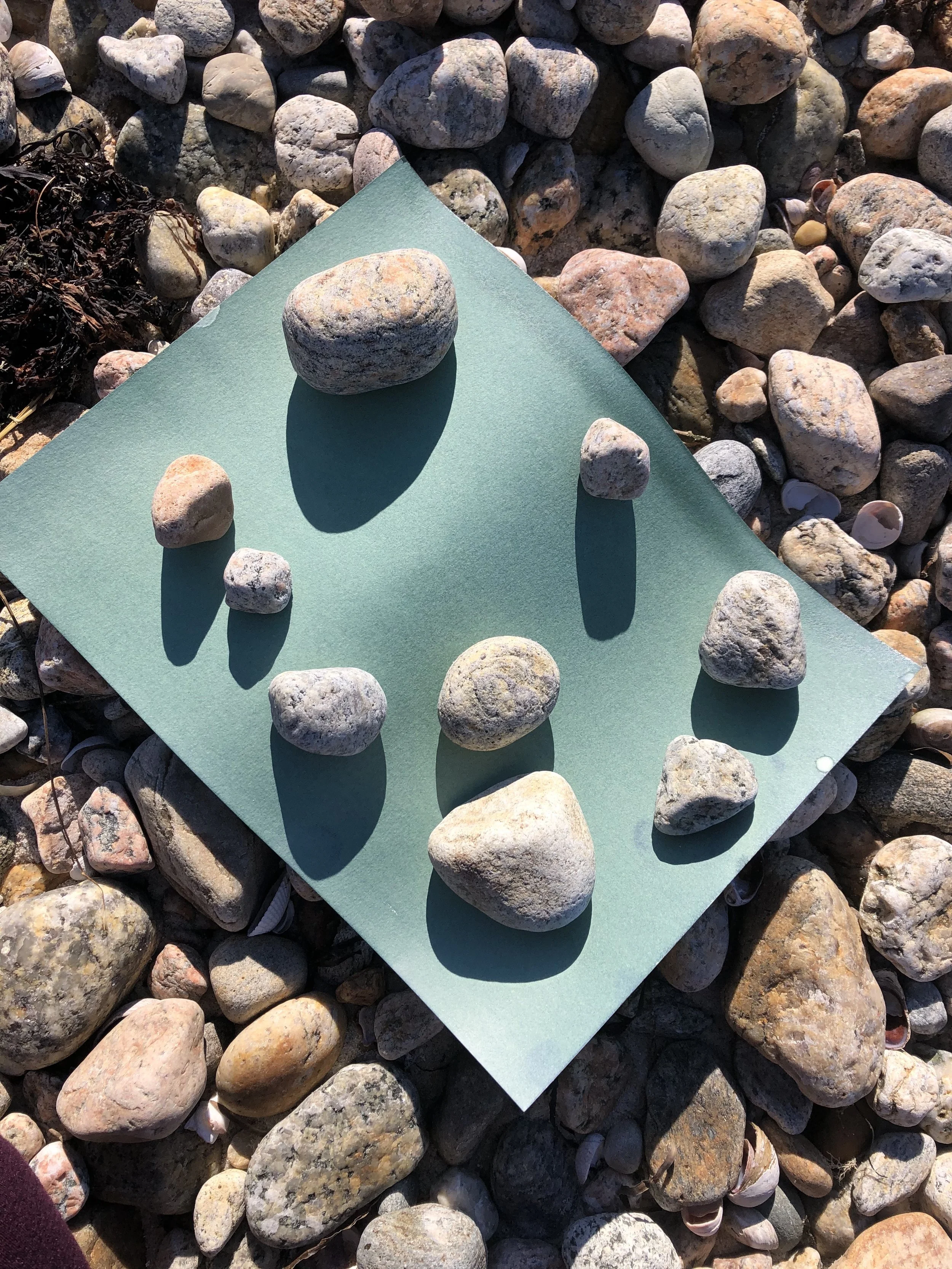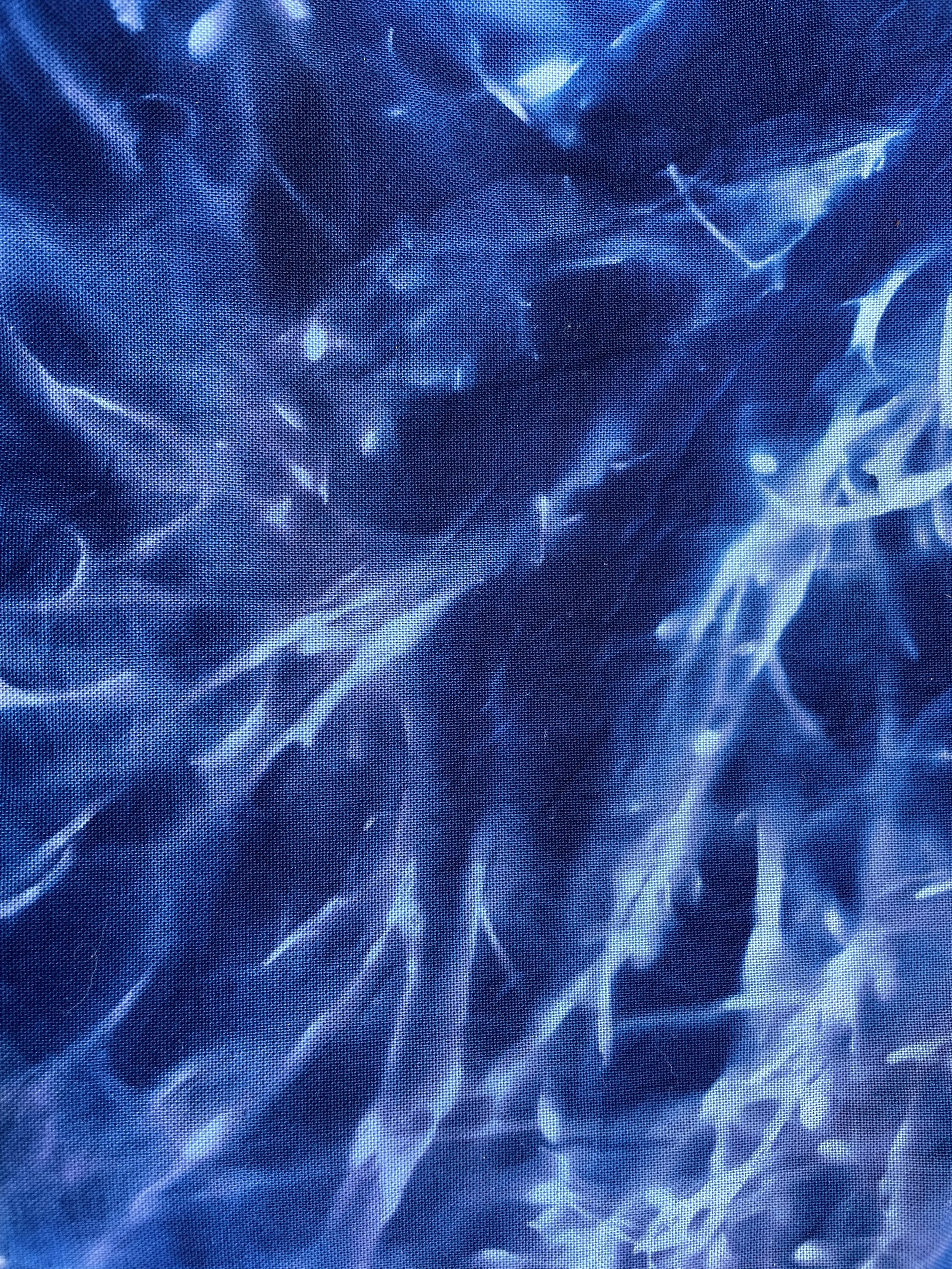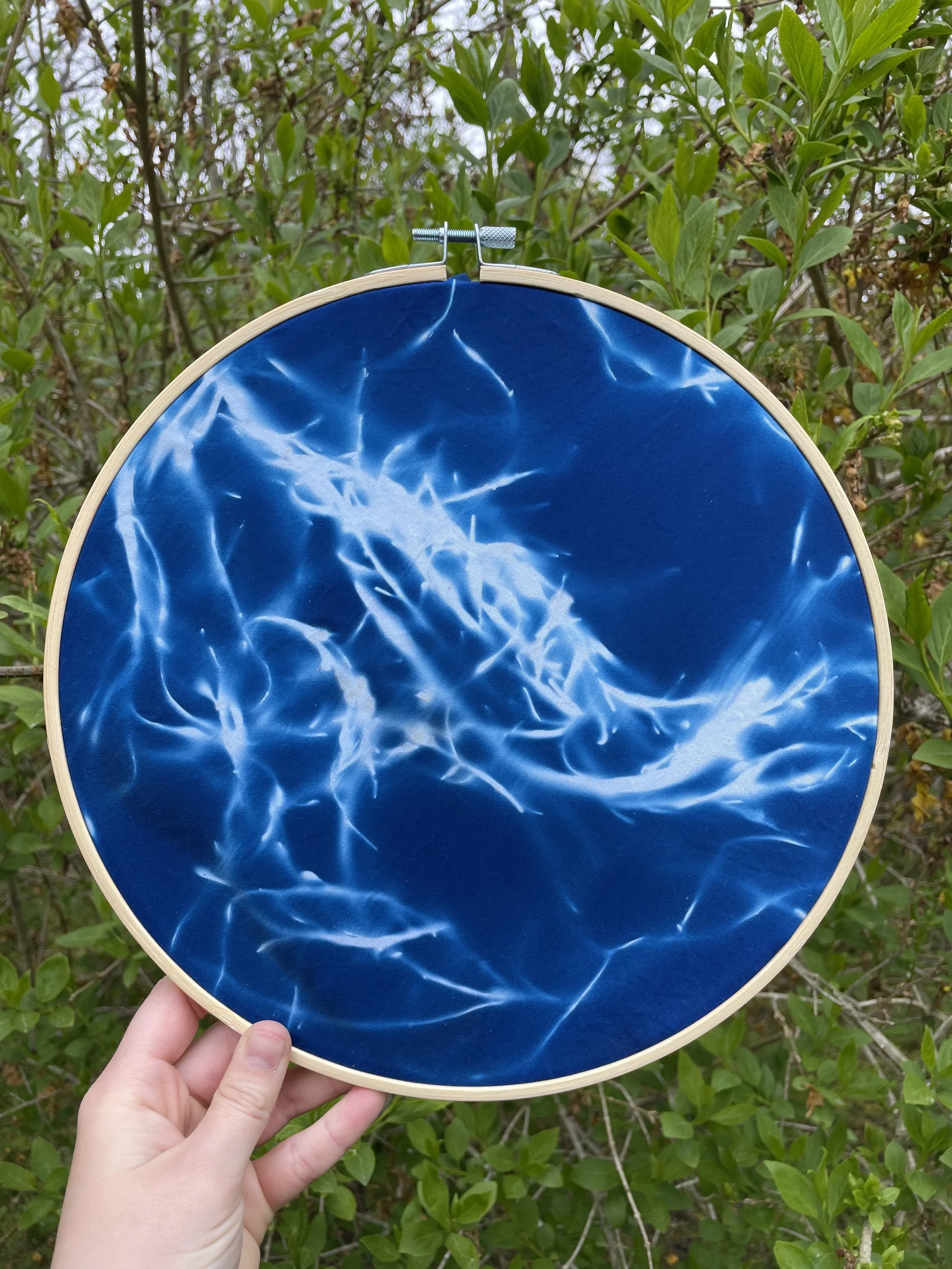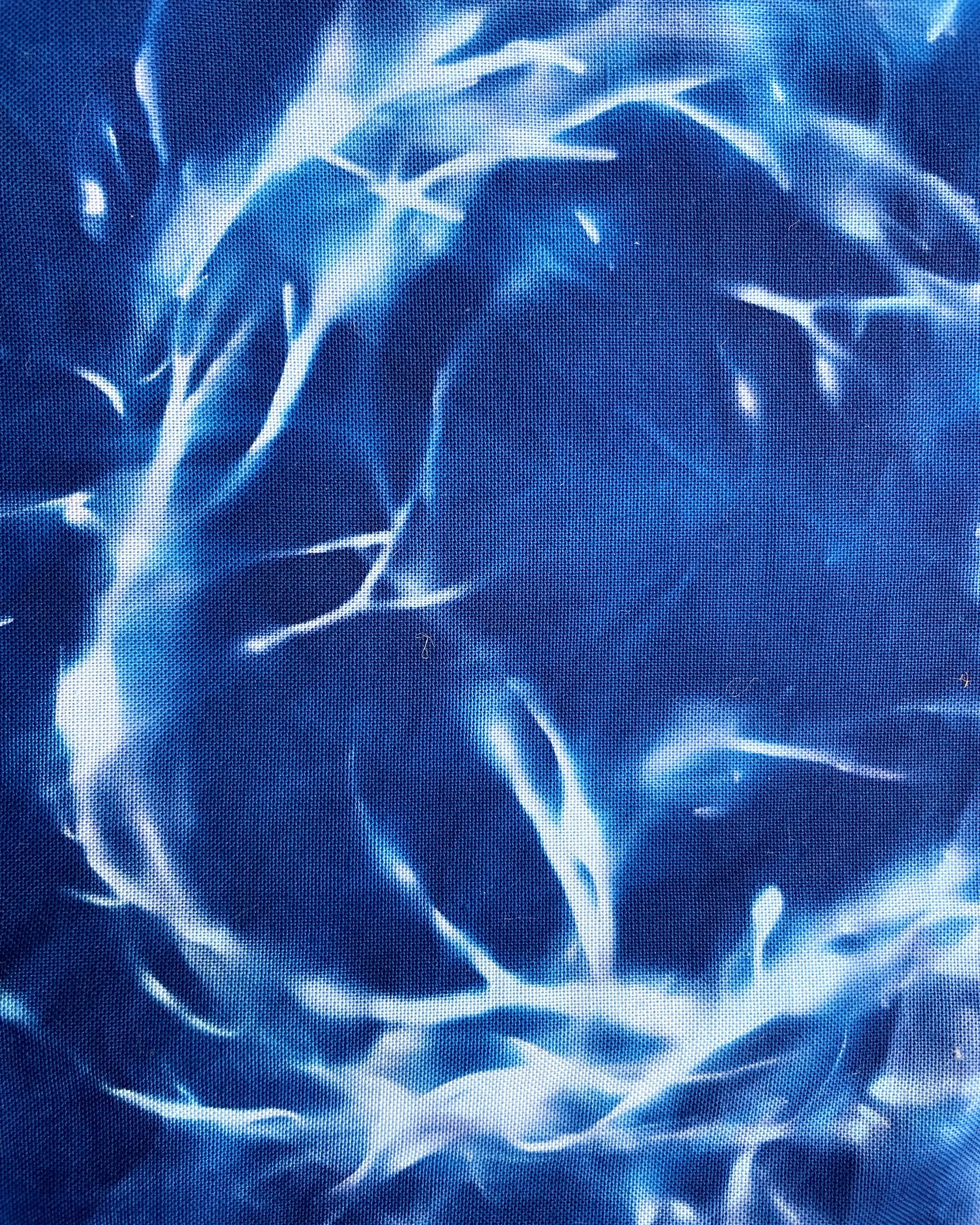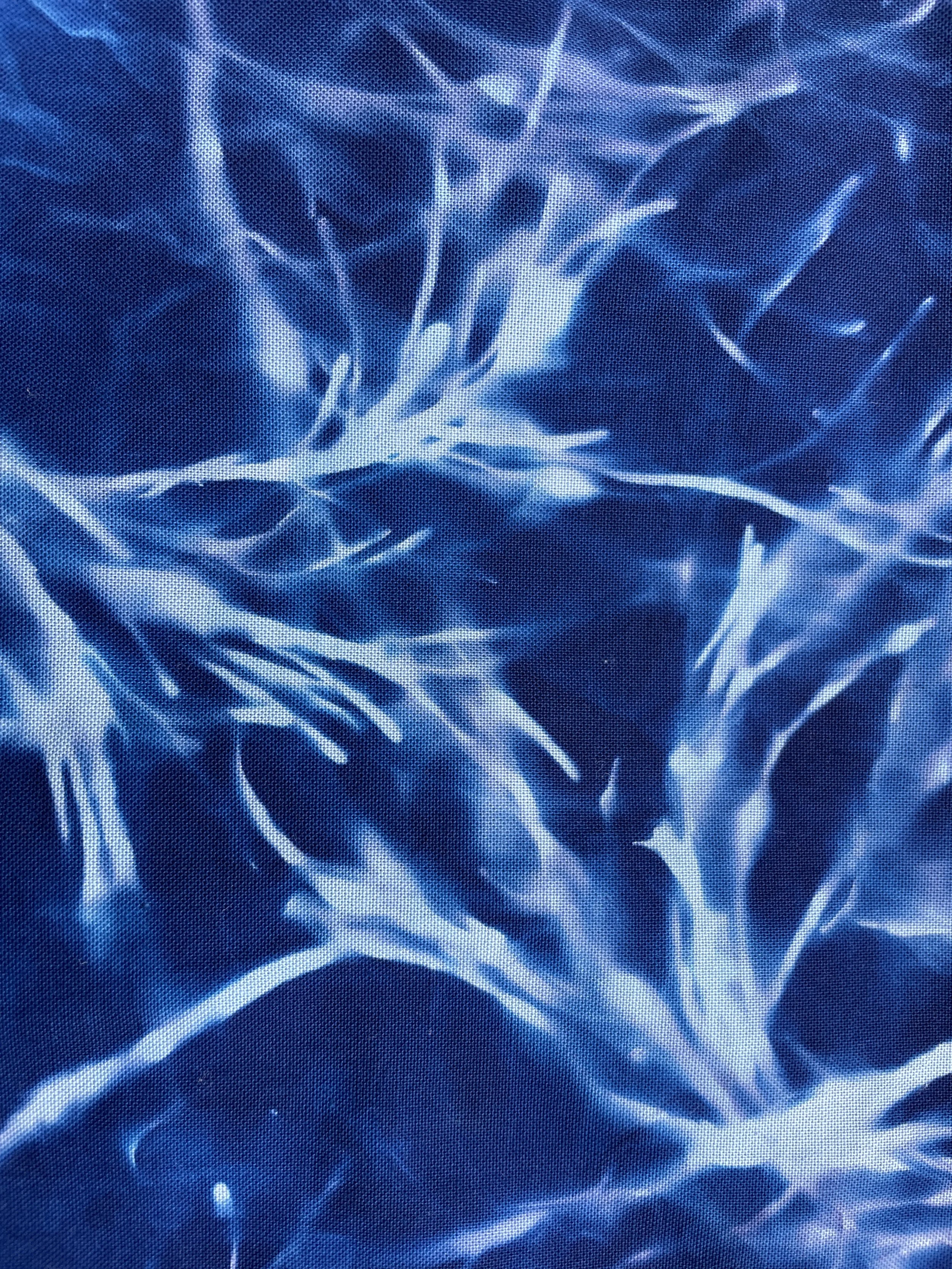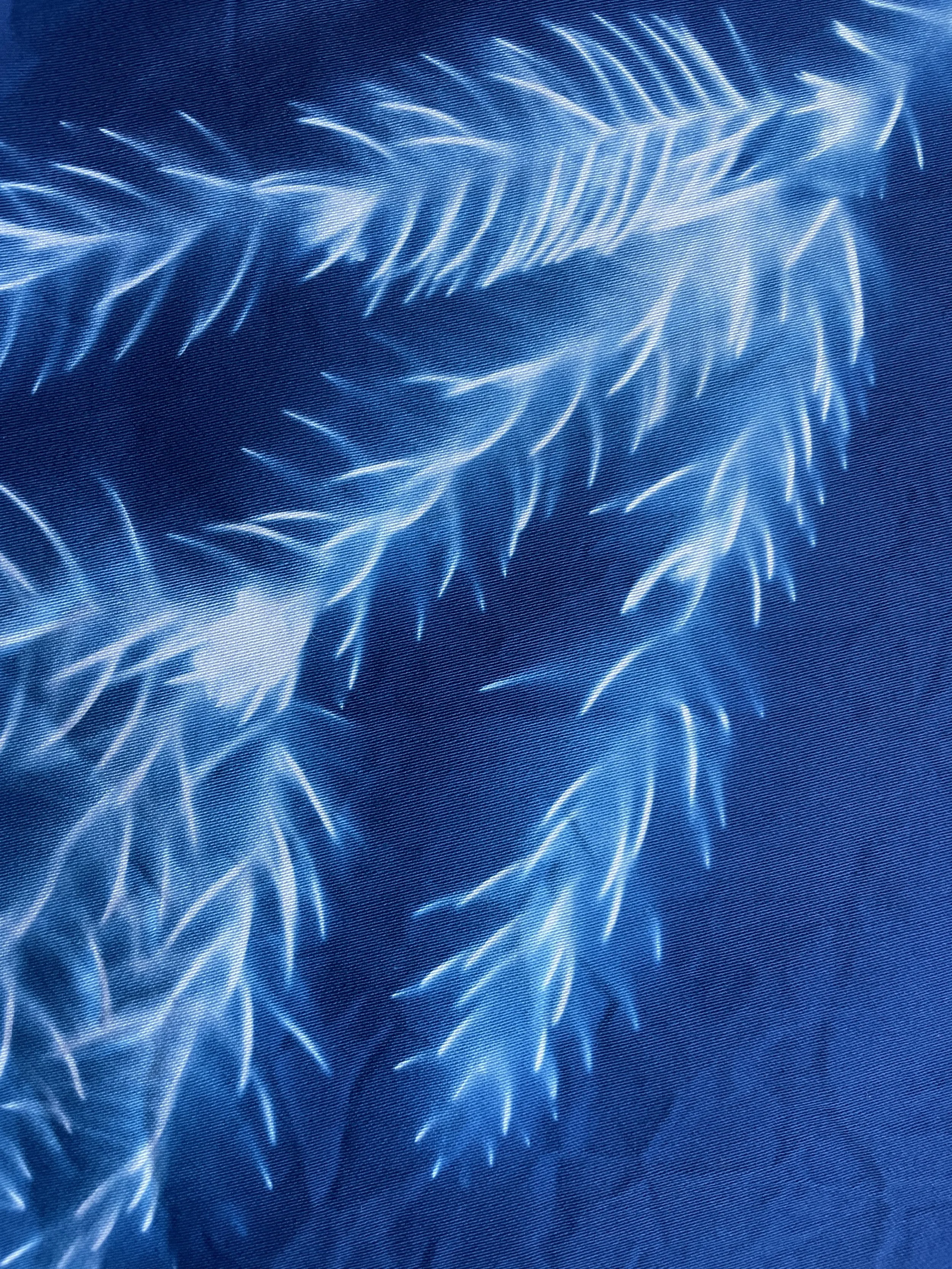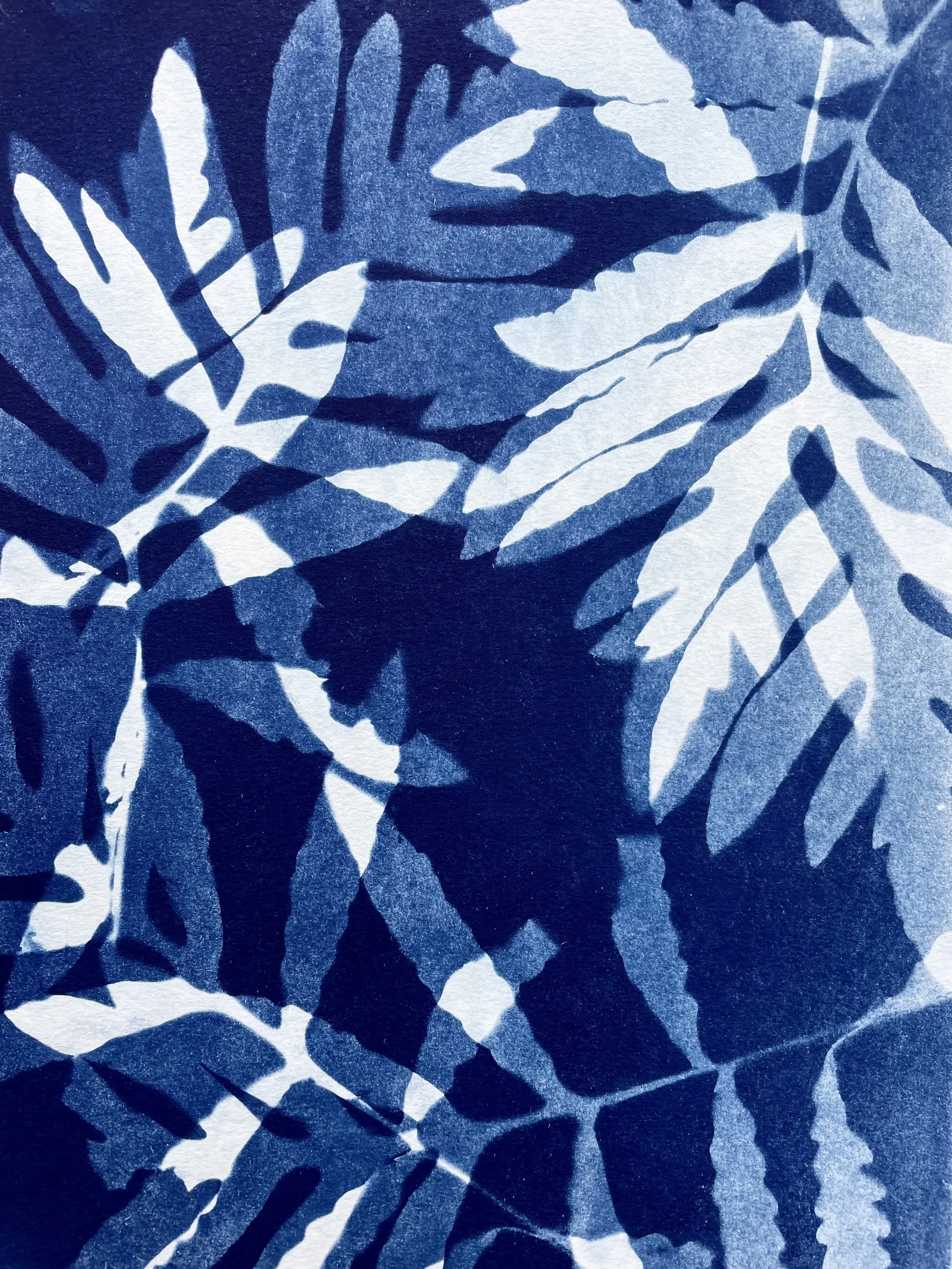CYANOTYPE PRINTING
Cyanotype is a photographic printing process that yields a cyan-blue print and utilizes two chemicals: equal volumes of ferric ammonium citrate and potassium ferricyanide. Discovered by John Herschel in 1842, it was designed to reproduce copies of something, also known as blueprints. The mixture is coated onto any absorbable surface (usually paper or fabric), then left to dry in a dark place. Prints can be made by exposing the coated surface to either artificial light or sunlight with a negative placed onto it, such as a transparent film or everyday object. After varied amount of time exposed to light, the surface is then rinsed with water to wash off the leftover chemical mixture, resulting in a darkened blue print after mixing with oxygen in the air.
